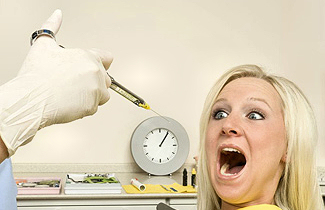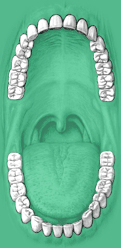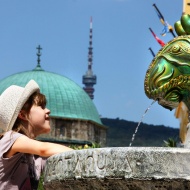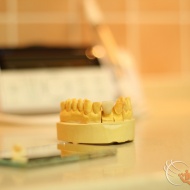⌂Main page › Dental tips › Sure way, if you are afraid of the dentist
Sure way, if you are afraid of the dentist
For a child the dentist is the most frightening creature of the world. Most of us still frightened enter in to the white robed man’s torture chamber.
Annoyance, excitement, stress, but if needs must, you would rather sleep through the whole thing? No man likes to hear the sound of the dental drill, the dental surgeries’ specific smell, the dentist’s super-close look. The treatment under anesthesia is not only a solution for those who dread from the pain, but the patients who are allergic to the local anesthetic can lay back – in the dental chair.

In the case if are preparing for serious interventions, for longer treatments (one-two hours), for oral surgical surgeries, for implant implantation, it is worth to consider the anesthesia as a possible anesthetic method – advises Dr Czinkóczy Béla oral surgeon dental specialist, the special expert of the spoiled and special cases. Of course for this implementation a serious base needed, but nowadays more and more dental surgery is furnished to perform anesthetic interventions. How works the narcosis, what kind of methods are available that the dental treatment won’t be bad dream?
Gas general anesthesia
The easiest method is the general anesthesia with gas which they use in the U.S. in the most surgery with daily routine. This is such a simple anesthetic procedure which is while maintaining the waking state ensures a level of relaxation like an altered state of consciousness after drinking, of course without the unpleasant effects and hangover entailed with the drunkenness. During such intervention the patient cooperates at the request with the medical attendant, and remembers for everything, but the anxiety can be solved perfectly.
Sedation
The venous sedation provides deeper relaxation than the gas general anesthesia. The intravenous dosing sleeping drought’s effect creates deep sleep, but every reflex such as spontaneous breathing, coughing or even the pain stimulus remains. Therefore, after the exhibition of the sleeping drought the local anesthesia is necessary, although the patient does not have to feel anything. The patient is all along in the state of deep sleep, than wake at any time by stopping the drug. During such intervention the patient does not remember anything, except dreaming something pleasant…After the pharyngeal reflex decreases due to the relaxation, to avoid choking it is recommended mainly for treatments in the frontal regions.
Intubated narcosis
The so called intubated narcosis provides deepest narcosis. In this case all of the reflexes turn off, there is no spontaneous breathing, and the muscle tones relax. In this case the anesthesiologist provides the most important life functions, with anesthetic machine breathe the patient, and with the intravenous dosing drugs maintain with anesthetic gas the needed deep narcosis. From such a deep narcosis the patient can wake up slowly and after the intervention it may take even a full day when every lingering effects of the narcosis disappears. This type of anesthesia used with hospital surgeries occasion too, and with this, and even several hours long interventions can carry out without any problems, don’t have to pay attention to the dangers of choking.




